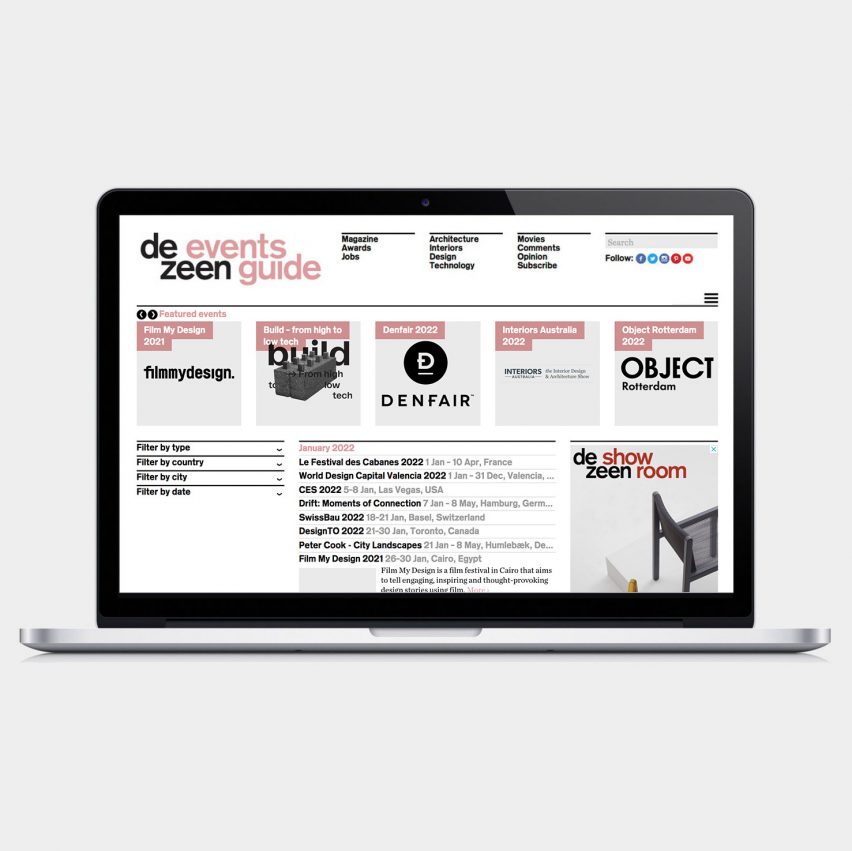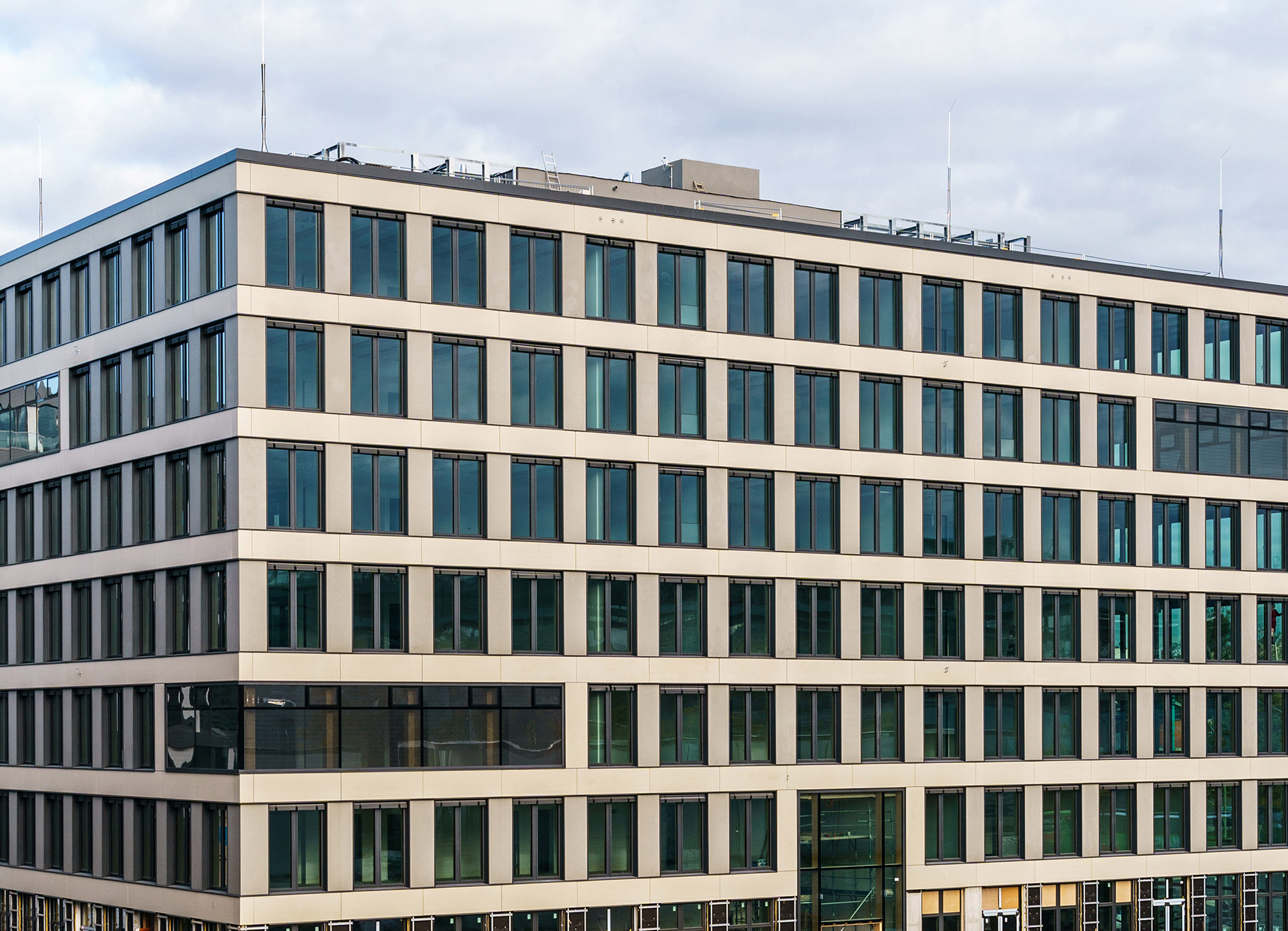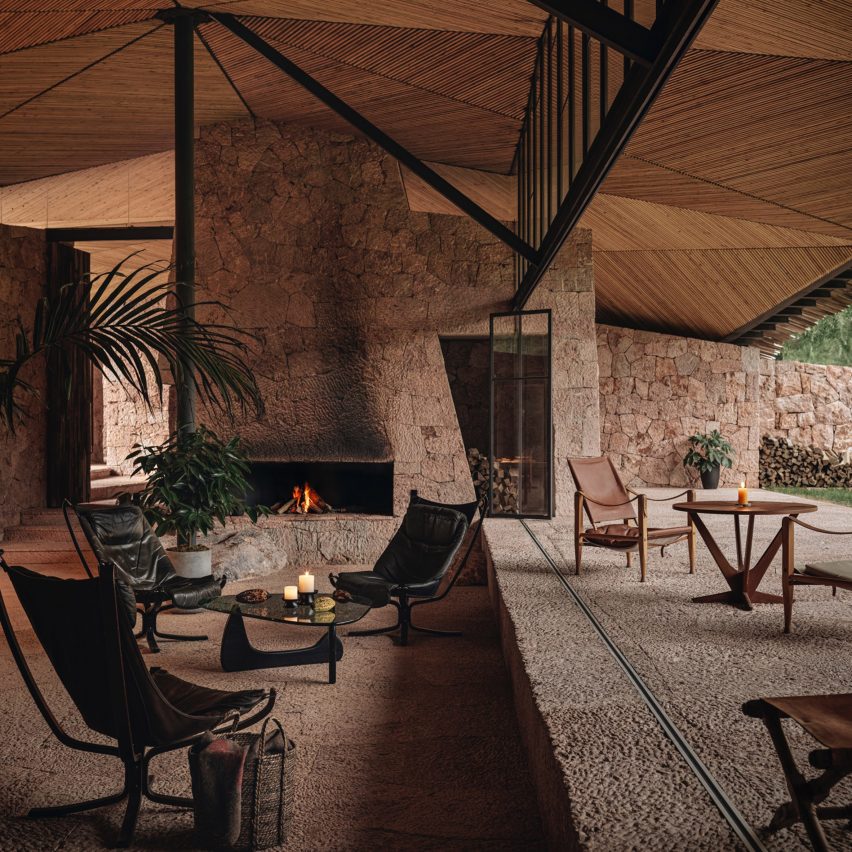
In the third of the video Dezeen interviews filmed with Richard Rogers in 2013, the late architect discussed the Lloyd's building in London and the backlash prompted by its radical design.
Rogers, who passed away on 18 December aged 88, spoke to Dezeen to coincide with a retrospective of his work at the Royal Academy of Arts in London.
He was one of the world's best-known architects, famous for his pioneering high-tech architecture.
Among his most recognisable work is the Centre Pompidou in Paris, which he designed together with Renzo Piano. Following the completion of that controversial building, Rogers struggled to find work until landing the commission to design the Lloyd's building in London.
In this interview, filmed at the Rogers Stirk Harbour + Partners office in Hammersmith, west London, he discussed how he convinced the conservative insurance firm to go for an inside-out design that was equally as radical as the Centre Pompidou.
"We were able to convince Lloyd's that we would put the mechanical services on the outside because mechanical services have a short life," he said.
The building proved just as divisive as its forerunner in Paris. "Once more we were attacked by everybody," Rogers said.
Read on for a transcript of the interview:
"We took about seven years to build the Pompidou Centre. We had a lot of political problems, we were taken to court regularly, for things like there was a law saying that foreigners can't do cultural buildings for France – a law which had been designed under the fascist period and no-one had bothered undoing.
"So we had lots of problems, so it took a long time. And the only good thing I suppose – or one of the good things – was that Renzo and I, being in our thirties, were very naive and we didn't realise it was really impossible, so we went on and did it.
"But at the end of it, there was no other work. Nobody wanted another Pompidou Centre. Now, the fact that we thought we could do other things didn't seem to come across.
"I went to teach in the States, in LA and at Yale. My closest partner, John Young, became a taxi driver and Renzo set up a small firm in France and had a tiny bit of work. I didn't really want to teach, I have to tell you.
The only piece of technology was a Xerox machine
"But then there was a competition for Lloyd's of London. Lloyd's had one person on the board who had heard of the Royal Institute of British Architects.
"For once the Royal Institute of British Architects had a very good president – I'm obviously biased, as we won that competition – and advised Lloyd's about us and five other people like Norman Foster, IM Pei, and so on.
"We had this competition and to everybody's surprise, we won it.
"Now it is truly different, everything's different. I mean, if we were building more-or-less a fun palace in Paris, this is a club.
"Lloyd's started in a coffee house in 1760-something where financiers met sailors, captains of boats, and they did transactions.
"So it's as traditional as you can [get]. You know, the only piece of technology when we went to see the [previous] Lloyd's building was the Xerox machine. Some people were still writing with feathers and ink.
"It was backward only in the process. Of course, it was the most famous insurance firm in the world, so there was a very cutting edge element within that.
"But we were certainly very strange people, or you may say, very strange bedfellows, for Lloyd's. And here Lloyd's really was a grey, black – bit of light grey, maybe – organisation. I mean everybody wore it, the buildings were like it and so on.
"We were again extremely fortunate, the same way as on Pompidou. The real critical thing in architecture is having a good client.
"A good client is not someone who says 'yes'. It's a client who is engaged in the evolution of the building, who responds, and it's better to have 'no' because you can probably find another way of doing it, writing it, shooting it, whatever your art is.
"The really difficult one is, 'well, I'll leave it to you, I don't care' and then at the end, it says 'no'.
"So here, we were heavily engaged. We spent half a day every month with the whole board of Lloyd's to discuss every part of it.

"We were able to convince Lloyd's that we would put the mechanical services on the outside because mechanical services have a short life. In other words, it's like the engines of a car.
"And the buildings have hundreds of years of life, the streets have thousands of years. It's the medieval streets, the streets now that are there are the medieval streets.
"Things which have a short life, we'll put on the outside. Keep the floors clear, because Lloyd's said they wanted two things: they wanted a building that would last into the next century, we made that one, and they wanted a building that would meet their changing needs.
"So then they produce lots of graphs to show the changing needs, and of course, the moment we finished Lloyd's there's London's big economic crisis.
"And London was about to fly to Frankfurt, and I remember well everybody discussing, including Lloyd's, whether they should move to Frankfurt.
"Frankfurt was going to be the business capital of Europe. It's very interesting to think because today London is so clearly the business capital of Europe, and probably of the world, apart from maybe New York.
I have no great love for high-tech, but it did explain something
"So we were dealing with people who knew about change, knew about risk, but hadn't a clue about art.
"The ducts, the pieces on the outside, allowed us to play a game with light and shadow. We were able to create a fifth elevation, a roof, and bring these big service towers up so that on the skyline you saw these elements.
"You know, I have no great love for high-tech, but it did explain something: we do believe in the process of construction.
"Lloyd's is built in concrete, with a certain amount of steel on the outside, and Pompidou is built in steel. And we've just finished an airport in Madrid, where the interiors is wood.
"I suppose one would like to think one uses the appropriate materials, but of course, appropriate materials are also shaped by the time you live in, where you live, shaped by the machine you yourselves are using here.
"You know when you're looking for the beauty of cameras, when you look at the beauty of watches, and so on, this certainly influences you.
"The same thing happened in the 15th century. You were influenced by what was happening at that time with perspective, which was invented in the 14th century, that clearly influenced the way that buildings were designed.
"So we use the technology of today, and the technology of yesterday when it's appropriate, to build the buildings of today.
"We thought Lloyd's was the absolute ultimate in the art of technology. When I look at it now it's handmade practically.
"Then people say, well, it's technology, and therefore it's a high-tech building. It's a bit too easy, but it's okay.
"We managed to persuade Lloyd's, and Lloyd's persuaded us, in such a way that we moved very well together.

"The other unspoken hero, which I should say, which is Peter Rice, who joined us on the Pompidou, who was a brilliant engineer from Arup, and he guided us as a philosopher, as well as a technologist and engineer as he was.
"He was Irish, and had clearly kissed the Blarney Stone and could persuade us in the most wonderful and quiet way.
"We worked so well with him. Unfortunately, he died of cancer. He was a terrific guy.
"Anyhow, once more we were attacked by everybody. A year before the end, a bit like the Beaubourg, a year before the end of the building there was an investigation by the Bank of England into what was going on at Lloyd's.
"So the chairman, everybody else, had to resign. The next chairman hated us, so we had a very tough last year.
He said: 'Do you feel beleaguered?'
"The only perhaps worthwhile storytelling [is] that when Lloyd's opened – the Queen opened it of course – and I sat next to the dean of St Paul's and he said, I remember him very well, he said: 'Do you feel beleaguered?'
"A word I now remember well. I said: 'Yes, I'm being attacked on all sides, with the press, and so on.' And he told me this little story about Wren which I think we should all remember.
"He said Wren was in his seventies when he, at last, got St Paul's built. He'd started 30 years beforehand.
"He was so tired of having his building attacked and turned down that by the time he got to building St Paul's he put a 20-foot wattle fence all around the site so nobody can see it.
"So even St Paul's was a shock of the new. We think it's there forever. Certainly, Prince Charles thinks it's been there forever, but it hasn't. And it was a risky building to do in those times, which is why it is great."
The post "We were attacked by everybody" when the Lloyd's building opened, recalls Richard Rogers appeared first on Dezeen.
from Dezeen https://ift.tt/3tiEmw6














